Building Strategic Corporate Alliances for Greater Impact

Building strategic corporate alliances can significantly enhance your non-profit’s impact. Corporations are increasingly looking to partner with NGOs to fulfill their social responsibility goals. By aligning your mission with a company’s values, you create a mutually beneficial relationship that drives real change.
First, identify companies that share your non-profit’s vision. Research their corporate social responsibility (CSR) programs and target those with a clear alignment. Building these connections requires persistence and clear communication.
Next, craft a compelling pitch. Highlight the shared benefits of the partnership, including brand visibility and community impact. Emphasize how the partnership can help the company meet its CSR goals while supporting your mission.
- Offer multiple ways to collaborate:
- Sponsorships: Propose events or programs they can sponsor.
- In-kind donations: Seek goods or services the company can provide.
- Employee engagement: Encourage volunteer opportunities for their employees.
Finally, maintain and nurture the relationship. Regularly update the company on the impact of their contribution. Celebrate successes together to reinforce the partnership’s value. Strong communication ensures the alliance remains effective and beneficial for both parties.
In summary, leveraging corporate partnerships is key to expanding your non-profit’s reach. With the right strategy, these alliances can provide significant resources and amplify your mission’s impact. At Just Group Consultancy, we help you identify and cultivate these partnerships, ensuring long-term success and sustainable growth.
Maximizing Philanthropic Contributions: Best Practices

Maximizing philanthropic contributions requires a thoughtful approach and strategic planning. Start by identifying your non-profit’s key needs and matching them with potential corporate partners. Clear communication is vital to ensure alignment with corporate values and goals.
First, develop a strong case for support. Highlight the specific impact of donations and how they contribute to your mission. Tailor your message to resonate with corporate values, demonstrating how their contribution benefits both the community and their brand.
- Follow these best practices to increase contributions:
- Personalize your approach: Understand each company’s unique goals and interests.
- Offer recognition: Publicly acknowledge their support through events, social media, and press releases.
- Create long-term engagement opportunities: Encourage recurring donations and ongoing collaborations.
Next, build relationships with key decision-makers within the company. Foster open communication, showing appreciation and providing regular updates on the impact of their contributions. Transparent reporting builds trust and encourages continued support.
Lastly, innovate your fundraising strategies. Consider matching gift programs, corporate volunteer grants, or cause-related marketing. These creative approaches can inspire greater involvement and increase overall contributions.
In conclusion, maximizing philanthropic contributions involves more than just asking for donations. It’s about creating meaningful partnerships that align with corporate values and drive lasting impact. At Just Group Consultancy, we help non-profits develop effective strategies to engage corporate partners, ensuring sustainable growth and successful outcomes.
Creating Mutually Beneficial Corporate Partnerships

Building mutually beneficial corporate partnerships is crucial for non-profits seeking to expand their impact. To achieve this, focus on aligning your mission with the company’s values and goals.
Begin by identifying potential partners whose corporate social responsibility (CSR) objectives align with your organization’s mission. Research their past philanthropic efforts, and tailor your proposal to highlight how a partnership can advance their CSR goals while supporting your cause.
- Consider these steps to create successful partnerships:
- Start with shared goals: Ensure both parties benefit from the collaboration.
- Communicate openly: Establish clear expectations and maintain regular contact.
- Offer tangible benefits: Show how the partnership can enhance the company’s brand and community standing.
Next, develop a partnership agreement that outlines the roles, responsibilities, and expectations of both parties. This document should include measurable objectives, timelines, and methods for evaluating the partnership’s success.
Moreover, emphasize the impact of the partnership. Share stories of how their support is making a difference, and provide regular updates on progress. This transparency builds trust and encourages deeper involvement.
Finally, celebrate successes together. Publicize joint initiatives through social media, press releases, and events. This recognition not only strengthens the partnership but also attracts potential new partners.
In conclusion, creating mutually beneficial corporate partnerships requires a strategic approach that focuses on shared goals and clear communication. At Just Group Consultancy, we help non-profits forge strong corporate alliances that drive positive change and sustainable growth.
Engaging Businesses in Long-Term Philanthropic Efforts

Engaging businesses in long-term philanthropic efforts can significantly boost your non-profit’s impact. To build lasting partnerships, focus on creating value for both your organization and the business.
Start by understanding the business’s core values and CSR objectives. Tailor your approach to align with their goals and show how a long-term partnership can benefit them. Businesses often seek meaningful connections that reflect their brand values and enhance their community image.
- Follow these strategies to engage businesses effectively:
- Build Strong Relationships: Develop personal connections with key decision-makers. Frequent communication helps build trust and understanding.
- Offer Flexible Partnership Models: Businesses appreciate options that fit their needs. Propose various ways to collaborate, such as sponsorships, employee volunteer programs, or cause-related marketing.
- Demonstrate Impact: Show how their support leads to tangible outcomes. Use data and stories to illustrate the difference their involvement makes.
Next, create a detailed partnership plan outlining goals, roles, and responsibilities. This clarity ensures both parties are aligned and committed to the partnership’s success.
Regularly update the business on the progress and achievements of the partnership. Transparency fosters a sense of shared accomplishment and encourages ongoing support.
Lastly, celebrate milestones together. Host joint events or share successes publicly to recognize their contributions. This acknowledgment strengthens the relationship and motivates continued engagement.
At Just Group Consultancy, we guide non-profits in forging and nurturing long-term philanthropic partnerships with businesses. Let’s work together to create lasting impact and mutual success.
Leveraging Corporate Resources for Non-Profit Growth

Leveraging corporate resources can propel your non-profit’s growth significantly. Corporations offer more than just financial support; their resources can enhance your programs and expand your reach.
Here’s how to effectively tap into these resources:
- Identify Resource Opportunities: Start by understanding what resources a company offers. This could include technology, office space, or expertise.
- Propose Clear Benefits: Show businesses how their resources will help achieve their CSR goals. Emphasize how their support aligns with their brand values and corporate objectives.
- Develop a Strategic Partnership Plan: Outline the specifics of the partnership. Include how the resources will be used and what outcomes are expected. Clarity prevents misunderstandings and sets mutual expectations.
- Engage with Key Contacts: Build relationships with key decision-makers. Personal connections often lead to more successful partnerships. Keep the lines of communication open and proactive.
- Showcase Mutual Benefits: Regularly update the business on how their resources are making a difference. Share success stories and data that highlight the impact of their contributions.
- Acknowledge and Appreciate Support: Recognize their support publicly. This can be through social media shout-outs, press releases, or thank-you events. Public appreciation enhances their brand image and encourages ongoing support.
By leveraging corporate resources effectively, you can enhance your non-profit’s capabilities and reach. At Just Group Consultancy, we help you identify and maximize these opportunities for your organization’s growth and success. Let’s partner to amplify your impact.
Navigating the Dynamics of Corporate Social Responsibility

Corporate Social Responsibility (CSR) plays a crucial role in modern business. Understanding how to navigate CSR can unlock valuable partnerships for your non-profit.
Here’s how to effectively engage with CSR initiatives:
- Understand CSR Goals: Each company has unique CSR goals. Research and understand these goals to align your proposals with their objectives.
- Tailor Your Approach: Customize your pitch to show how your non-profit’s mission fits with their CSR priorities. Be specific about how their support will make an impact.
- Build Strong Relationships: Establish genuine connections with corporate partners. Regular communication and transparency foster trust and commitment.
- Showcase Mutual Benefits: Highlight the benefits for both parties. For example, CSR involvement can enhance a company’s public image while providing critical support to your cause.
- Provide Clear Metrics: Companies value measurable outcomes. Offer clear metrics on how their involvement will be evaluated. This could include impact reports or success stories.
- Offer Recognition Opportunities: Provide avenues for recognition, such as public acknowledgments or exclusive events. This not only appreciates their support but also aligns with their branding efforts.
- Stay Engaged: Maintain an ongoing relationship beyond initial engagement. Regular updates and continued collaboration strengthen the partnership.
Navigating CSR dynamics effectively can lead to successful, long-term corporate partnerships. At Just Group Consultancy, we guide you in leveraging these opportunities to enhance your non-profit’s reach and impact. Connect with us to explore how we can support your CSR strategy.
Tailoring Partnerships to Align with Corporate Goals

Successfully forging partnerships with businesses involves aligning your non-profit’s mission with corporate goals. Here’s how to tailor partnerships effectively:
- Research Corporate Objectives: Understand the company’s CSR goals and values. This helps you tailor your approach to match their priorities.
- Customize Your Proposal: Create a proposal that speaks directly to the company’s objectives. Highlight how your non-profit’s work aligns with their goals.
- Show Clear Benefits: Demonstrate how the partnership will benefit the corporation. Focus on positive outcomes for their brand and community impact.
- Use Data and Case Studies: Provide data and examples that show your non-profit’s success. Use case studies to illustrate potential results from the partnership.
- Offer Engaging Opportunities: Suggest creative ways for the company to get involved. This could include volunteer opportunities, sponsorships, or co-branded campaigns.
- Establish Clear Communication: Maintain open lines of communication throughout the partnership. Regular updates and feedback help ensure that both parties are satisfied.
- Build Long-Term Relationships: Aim for ongoing partnerships rather than one-time engagements. Building long-term relationships can lead to more sustained support and deeper engagement.
Tailoring your partnership approach to align with corporate goals creates a win-win scenario. At Just Group Consultancy, we specialize in helping non-profits navigate these strategies to maximize their impact. Contact us to learn how we can help you build and maintain effective corporate partnerships.
Measuring the Success of Philanthropic Collaborations

Evaluating the success of philanthropic collaborations ensures they deliver on promises and objectives. Here’s how to effectively measure their impact:
- Define Clear Objectives: Set specific goals for the partnership. This includes financial targets, community impact, and engagement levels.
- Track Key Performance Indicators (KPIs): Identify KPIs such as funds raised, volunteers engaged, or projects completed. Regularly monitor these metrics to assess progress.
- Gather Feedback: Collect feedback from all stakeholders, including corporate partners, beneficiaries, and your team. Use surveys or interviews to get comprehensive insights.
- Analyze Outcomes: Compare actual results against your initial goals. Evaluate both quantitative and qualitative outcomes to understand the full impact.
- Report Successes and Challenges: Create detailed reports on the achievements and areas for improvement. Share these with your corporate partners to maintain transparency.
- Adjust Strategies: Based on your findings, adjust your strategies for future collaborations. Implement changes that enhance the partnership’s effectiveness.
- Celebrate Achievements: Acknowledge and celebrate the successes of the partnership. Highlight the positive outcomes and contributions of all involved.
Measuring the success of philanthropic collaborations not only demonstrates accountability but also helps in strengthening future partnerships. At Just Group Consultancy, we assist non-profits in assessing and optimizing their philanthropic efforts. Contact us to learn how we can support your organization in maximizing the impact of your partnerships.
